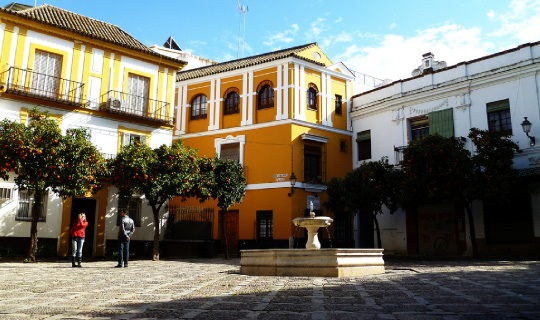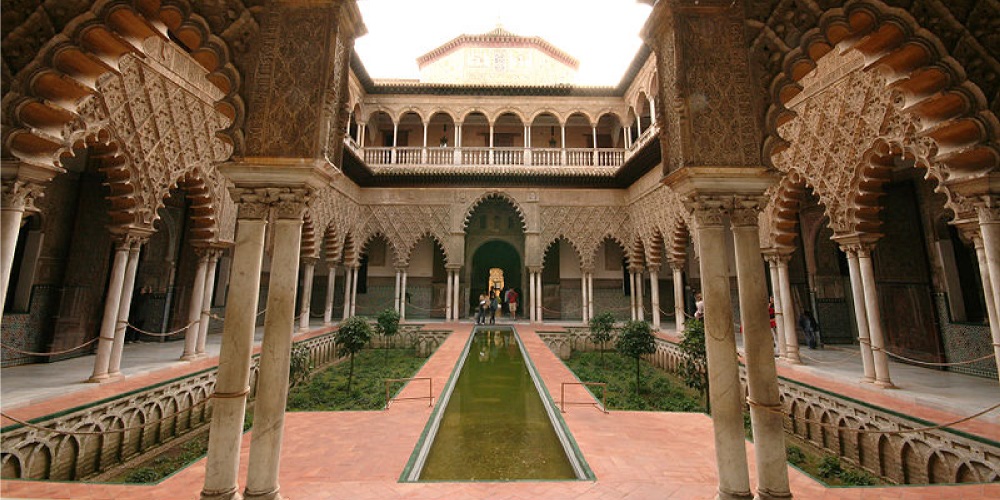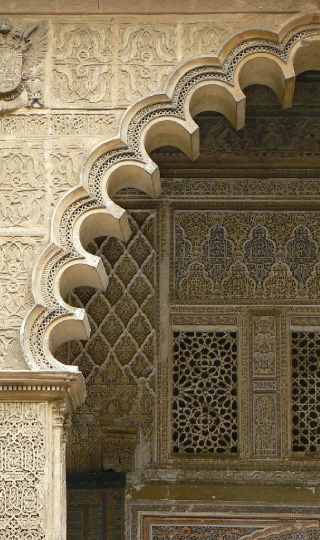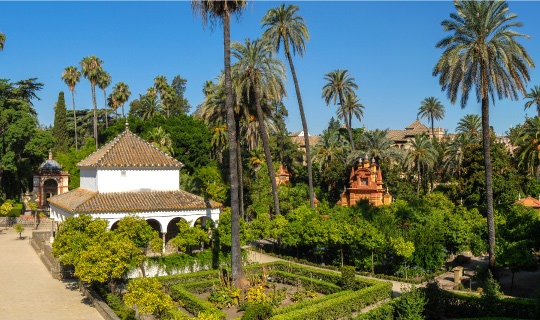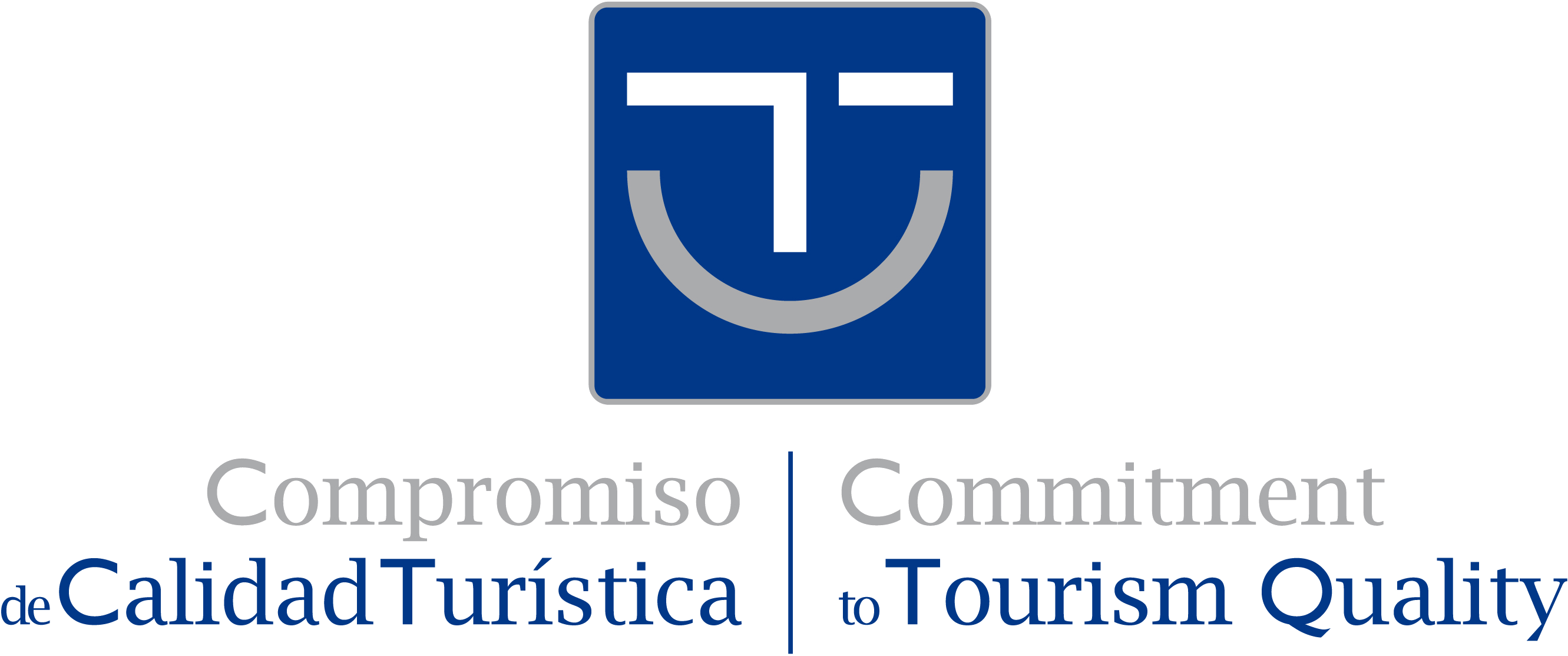Sevilla Essentials
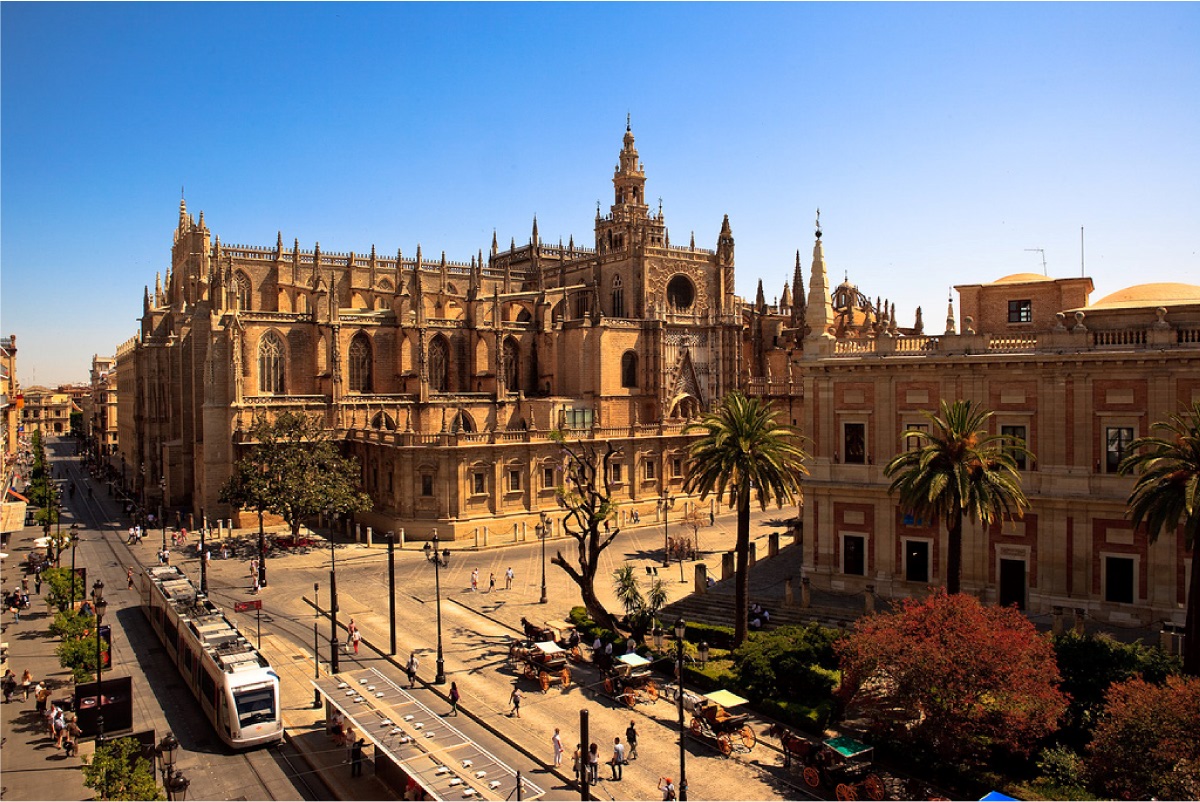
The Cathedral of Saint Mary of the See
The Cathedral of Saint Mary of the See (Spanish: Catedral de Santa María de la Sede), better known as Seville Cathedral, is a Roman Catholic cathedral in Seville (Andalusia, Spain). It is the largest Gothic cathedral and the third-largest church in the world. It was registered in 1987 by UNESCO as a World Heritage Site, along with the Alcázar palace complex and the General Archive of the Indies
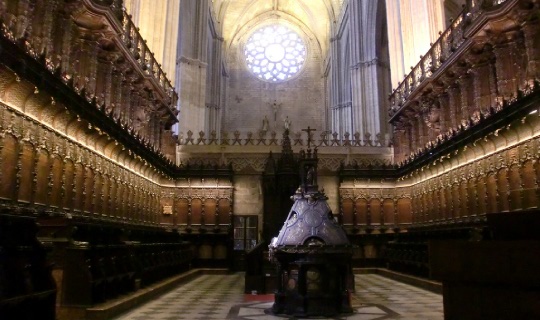
After its completion in the early 16th century, the Seville Cathedral supplanted Hagia Sophia as the largest cathedral in the world, a title the Byzantine church had held for nearly a thousand years. The cathedral is also the burial site of Christopher Columbus. The Archbishop's Palace is located on the northeastern side of the cathedral.
Seville Cathedral was built to demonstrate the city's wealth, as it had become a major trading center in the years after the Reconquista in 1248. In July 1401 it was decided to build a new cathedral. According to local oral tradition, the members of the cathedral chapter said: "Hagamos una Iglesia tan hermosa y tan grandiosa que los que la vieren labrada nos tengan por locos" ("Let us build a church so beautiful and so grand that those who see it finished will think we are mad"). Construction began in 1402 and continued until 1506. The clergy of the parish gave half their stipends to pay for architects, artists, stained glass artisans, masons, carvers, craftsman and labourers and other expenses.
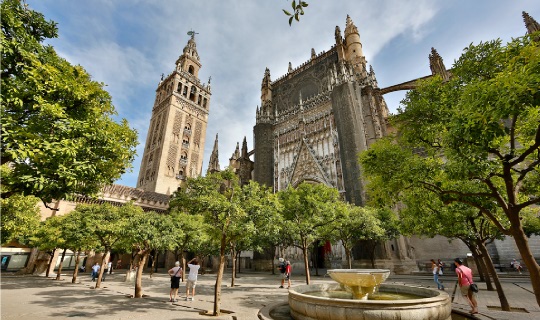
Five years after construction ended, in 1511, the dome collapsed and work on the cathedral recommenced. The dome again collapsed in 1888, and work was still being performed on the dome until at least 1903. The 1888 collapse occurred due to an earthquake and resulted in the destruction of "every precious object below" the dome at that time.
The interior has the longest nave of any cathedral in Spain. The central nave rises to a height of 42 meters and is lavishly decorated with a large quantity of gilding. In the main body of the cathedral, the most noticeable features are the great boxlike choir loft, which fills the central portion of the nave, and the vast Gothic retablo of carved scenes from the life of Christ. This altarpiece was the lifetime work of a single craftsman, Pierre Dancart.
The builders used some columns and other elements from the ancient mosque, including its minaret, which was converted into a bell tower known as La Giralda, now the city's most well-known symbol.
Giralda
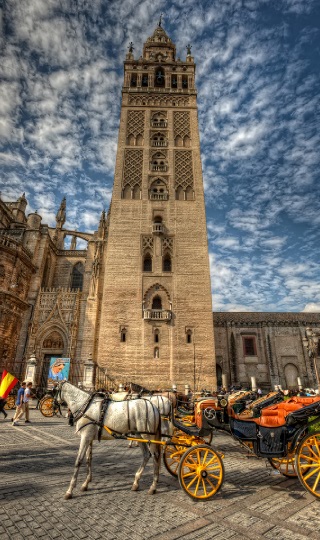

The Giralda (Spanish: La Giralda ; Arabic: الخيرالدة) is a former minaret that was converted to a bell tower for the Cathedral of Seville in Seville,[1] which was registered in 1987 as a World Heritage Site by UNESCO along with the Alcazar and the General Archive of the Indies. The tower is 104.1 m in height and it was one of the most important symbols in the medieval city.
The tower was begun under the architect Ahmad Ben Baso in 1184. After Ben Baso's death, other architects continued work on the tower. The mathematician and astronomer Jabir ibn Aflah (or Geber) is also often credited with the tower's design. The tower was completed March 10, 1198 with the installation of copper spheres on the tower's top. The Almohads built similar towers in what are now Spain and Morocco during this period. The tower of the Koutoubia Mosque in Marrakesh served as a model for the Giralda and its sister, the Hassan Tower in Rabat.
The tower's first two-thirds is a former minaret from the Almohad period of Seville, the upper third Spanish Renaissance architecture. After Seville was taken by the Christians (1248) in the Reconquista, the city's mosque was converted into a church. This structure was badly damaged in a 1356 earthquake, and by 1401 the city began building the current cathedral, one of the largest churches in the world and an outstanding example of the Gothic and Baroque architectural styles. The tower survived the earthquake, but the copper spheres that originally topped the tower fell during a 1365 earthquake, and the spheres were replaced with a cross and bell. The new cathedral incorporated the tower as a bell tower and eventually built it higher during the Renaissance under architect Hernán Ruiz the Younger, who was commissioned to work on the tower in 1568. This newer section of the tower contains a large inscription of Seville's motto, NO8DO, meaning "[Seville] has not abandoned me." Alfonso X of Castile gave the motto to the city when it continued to support his rule during an insurrection. Covering the top of the tower is the "Lily section" which surrounds the enclosure with the bell. The statue stands 4 m (13 feet) in height – 7 m (23 ft) with the pedestal – and sit on top of the tower from its installation in 1568.
Orange Tree Courtyard
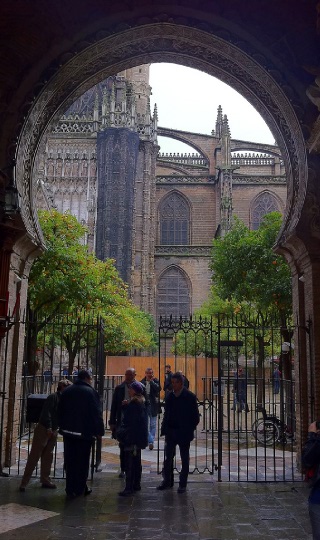

Jewry (Santa Cruz Neighborhood)
